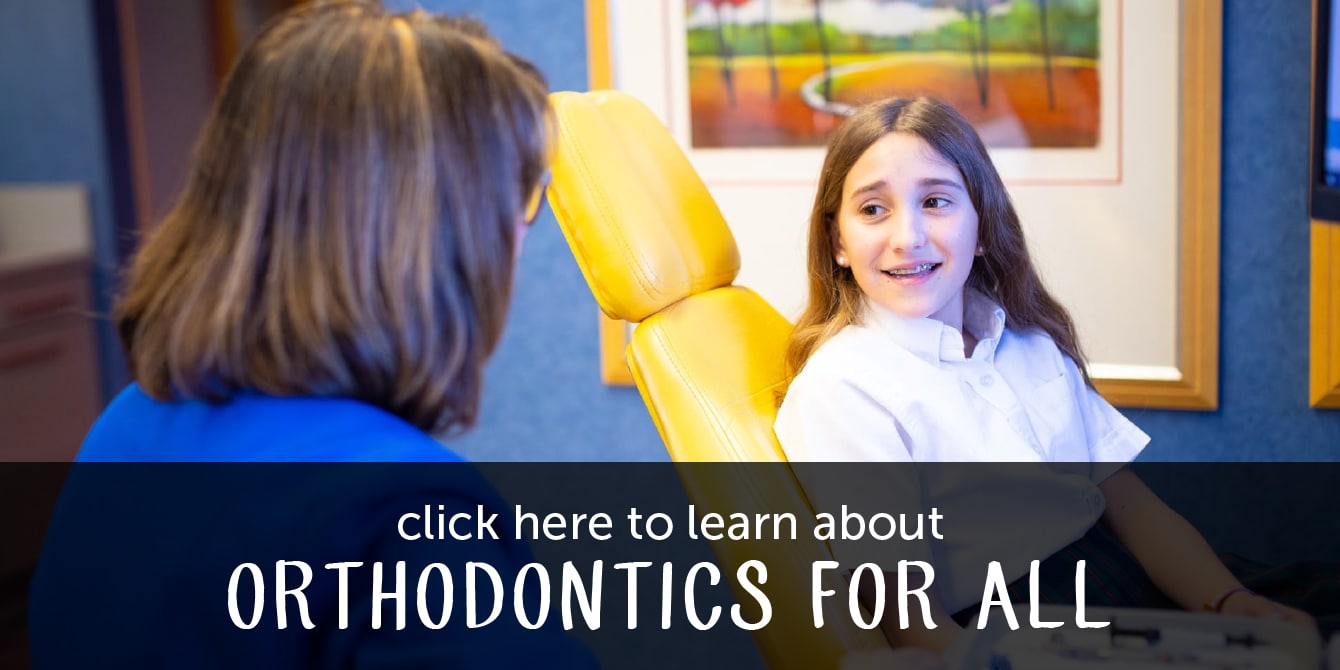Orthodontics is an advanced treatment composed of several different types of appliances used to correct misaligned teeth. Not only does orthodontic treatment correct crooked, crowded teeth, it also corrects jaw issues, which creates a better bite and improves the function of the airway. In some cases, it is necessary for a child to have two phases of orthodontic treatment to promote the optimal outcome of comprehensive treatment. The American Association of Orthodontists recommends that children have their first exam no later than age seven.
Phase one explained
Phase one of orthodontic treatment is also commonly referred to as interceptive orthodontics. Typically, treatment can begin anywhere between the age of 6 and 9, while a child is still in the stage of a mixed dentition. This proactive approach allows children with more complex issues to expand the jaw and create room for straighter teeth. Luckily, your little one will not require a full upper and lower arch of metal braces at this point. Instead, Dr. Cohen will use his advanced treatment planning strategies to determine which functional appliance is best for your little one’s orthodontic needs. Some of these functional appliances include space maintainers, expanders, specialized retainers or braces involving limited teeth. Most phase one orthodontic treatment is completed within one year.
Phase two explained
Phase two orthodontic treatment can last up to three years. Commonly, during this phase of treatment, traditional braces are used to properly align teeth, maximizing the patients oral esthetics. In some cases, your child may require extractions if enough room could not be created for optimal function and esthetics during phase one.This phase only begins once all the adult dentition is present, and is completed once a child’s teeth have been guided into place, creating a beautiful and straight smile and a properly functioning bite.
The end result and final outcome of orthodontics in two phases
Through the use of the most advanced dental technology, like our 3D CT X-ray and iTero scanner, Dr. Cohen’s vast knowledge of orthodontic complexities, along with a knowledgeable team, the end result of two-phase orthodontics results in optimal function of your child’s jaw and a beautifully, aesthetically pleasing smile. Early interceptive orthodontics is only recommended when dentally necessary due to extremely complex orthodontic issues in which one stage of treatment will not successfully correct orthodontic issues.
Contact the top orthodontic provider in Dallas!
At myKIDSdds we excel in providing orthodontic care to children with all types of orthodontic complexities. By collaborating with our pediatric dentists, we are able to intercept and begin your child’s treatment at just the right time, enabling the best possible outcome for your little one’s orthodontic treatment. Contact one of our patient care specialists today to schedule your kiddos complimentary exam! We can not wait to improve your child’s smile cand promote optimal function!
Dental Visits
With both metal braces and the Invisalign system, you should regularly schedule and attend follow-up appointments with your dentist. At myKIDSdds, we typically schedule appointments for every four to six weeks, giving us time to evaluate and plan for each adjustment. Those with metal braces can expect to have the wire tightened during these visits, leading to better alignment. If you opted for the Invisalign system, you can expect to go home with a few new trays, as you need to change the one you are using every two weeks.

Schedule an Appointment
If you are considering Invisalign or metal braces for your teen, contact myKIDSdds directly. Our dentists and orthodontists will help you determine what type of alignment option is best for your teen.
If you’re in Dallas, TX or the surrounding areas, you can schedule your dental appointment online or give us a call directly.
















